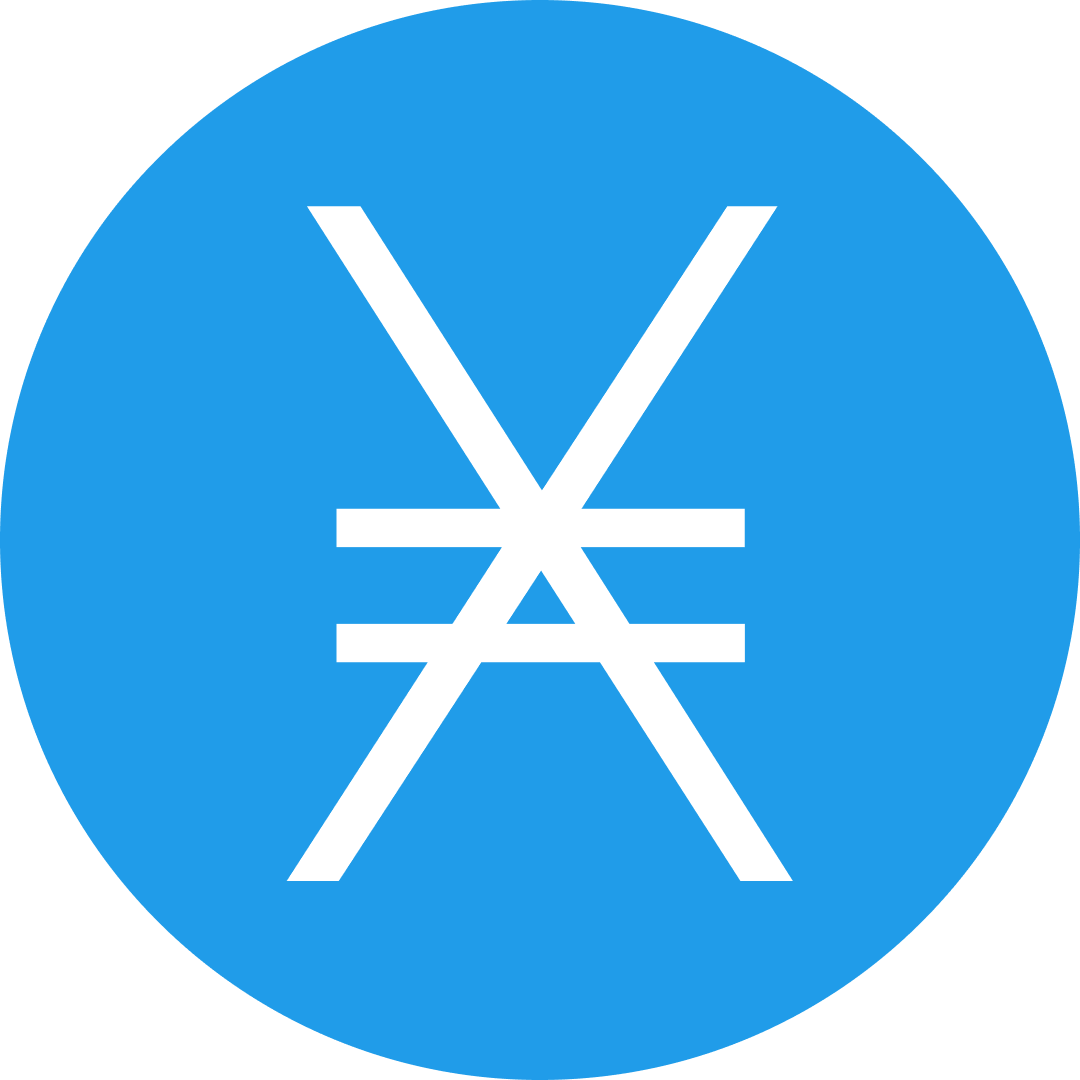-
 bitcoin
bitcoin $103128.103252 USD
-3.33% -
 ethereum
ethereum $3437.127692 USD
-4.86% -
 tether
tether $0.999700 USD
-0.02% -
 xrp
xrp $2.403993 USD
-5.73% -
 bnb
bnb $961.374676 USD
-4.11% -
 solana
solana $154.938665 USD
-8.18% -
 usd-coin
usd-coin $1.000113 USD
0.03% -
 tron
tron $0.298122 USD
0.30% -
 dogecoin
dogecoin $0.172428 USD
-5.76% -
 cardano
cardano $0.557625 USD
-7.13% -
 hyperliquid
hyperliquid $38.740701 USD
-6.51% -
 chainlink
chainlink $15.306051 USD
-7.51% -
 bitcoin-cash
bitcoin-cash $507.558648 USD
-3.26% -
 stellar
stellar $0.281899 USD
-6.74% -
 unus-sed-leo
unus-sed-leo $9.241811 USD
0.57%
What indicators should be used for TRX technical analysis? Which is more accurate, MACD or KDJ?
TRX traders use technical indicators like MACD and KDJ to analyze trends and momentum, with MACD suited for long-term trends and KDJ for short-term trades.
Apr 28, 2025 at 07:15 pm
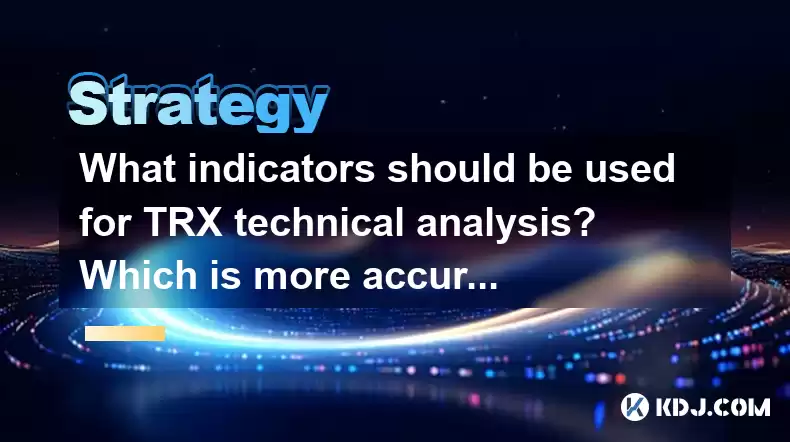
Analyzing the technical aspects of TRX (Tron) can be a complex but rewarding endeavor for cryptocurrency traders. To effectively analyze TRX, traders often rely on a variety of technical indicators. These indicators help in understanding market trends, momentum, and potential price reversals. In this article, we will explore some of the key indicators used for TRX technical analysis and compare two popular indicators, MACD and KDJ, to determine which might be more accurate for trading TRX.
Understanding TRX and Technical Analysis
TRX, the native cryptocurrency of the Tron network, has seen significant volatility and trading volume since its inception. Technical analysis is a method used to evaluate investments and identify trading opportunities by analyzing statistical trends gathered from trading activity, such as price movement and volume. For TRX, technical analysis can help traders make informed decisions based on historical data rather than relying solely on fundamental analysis.
Key Indicators for TRX Technical Analysis
There are several indicators that traders commonly use when analyzing TRX. Let's explore some of the most popular ones:
Moving Averages
Moving averages are fundamental tools in technical analysis. They help smooth out price data to identify the direction of the trend. For TRX, traders often use:
- Simple Moving Average (SMA): This calculates the average price over a specific period, providing a straightforward view of the trend.
- Exponential Moving Average (EMA): This gives more weight to recent prices, making it more responsive to new information.
Traders might use a combination of short-term and long-term moving averages to identify potential buy or sell signals. For instance, when a short-term moving average crosses above a long-term moving average, it may signal a bullish trend.
Relative Strength Index (RSI)
The Relative Strength Index (RSI) is a momentum oscillator that measures the speed and change of price movements. For TRX, RSI can help identify overbought or oversold conditions. The RSI ranges from 0 to 100, with readings above 70 indicating overbought conditions and readings below 30 indicating oversold conditions. Traders often look for divergences between RSI and price to predict potential reversals.
Bollinger Bands
Bollinger Bands are volatility bands placed above and below a moving average. They expand and contract based on the volatility of the price. For TRX, Bollinger Bands can help identify periods of high or low volatility. When the bands are narrow, it suggests low volatility and a potential upcoming move. When the bands are wide, it indicates high volatility. Traders might look for price touching the upper or lower band as a signal for potential reversals or continuations.
MACD (Moving Average Convergence Divergence)
The MACD is a trend-following momentum indicator that shows the relationship between two moving averages of a security’s price. It consists of the MACD line, the signal line, and the histogram. For TRX, traders use MACD to identify potential buy and sell signals. A bullish signal occurs when the MACD line crosses above the signal line, while a bearish signal occurs when the MACD line crosses below the signal line. The histogram can also provide insights into the strength of the trend.
KDJ (Stochastic Oscillator)
The KDJ indicator is a variation of the stochastic oscillator, which is used to predict price turning points by comparing the closing price of a security to its price range. For TRX, KDJ can help identify overbought and oversold conditions. The KDJ consists of three lines: the %K line, the %D line, and the J line. A bullish signal occurs when the %K line crosses above the %D line, while a bearish signal occurs when the %K line crosses below the %D line. The J line can provide additional insights into potential trend reversals.
Comparing MACD and KDJ for TRX
Both MACD and KDJ are popular indicators used for technical analysis, but they have different strengths and weaknesses. Let's compare them in the context of TRX trading.
MACD for TRX
MACD is widely used for its ability to provide clear buy and sell signals. For TRX, MACD can be particularly useful in identifying trend changes and momentum shifts. Here are some steps to use MACD for TRX trading:
- Open your trading platform and add the MACD indicator to the TRX chart.
- Look for the MACD line crossing above the signal line as a potential buy signal.
- Monitor the histogram to gauge the strength of the trend. A rising histogram indicates increasing momentum.
- Use the MACD in conjunction with other indicators, such as moving averages, to confirm signals.
KDJ for TRX
KDJ is known for its sensitivity to price changes, making it useful for identifying short-term trading opportunities. For TRX, KDJ can help traders capitalize on quick price movements. Here are some steps to use KDJ for TRX trading:
- Add the KDJ indicator to the TRX chart on your trading platform.
- Watch for the %K line crossing above the %D line as a potential buy signal.
- Monitor the J line for additional insights into potential reversals.
- Use the KDJ in combination with other indicators, such as RSI, to validate signals.
Which is More Accurate for TRX: MACD or KDJ?
Determining which indicator is more accurate for TRX trading can depend on several factors, including the trader's strategy, time frame, and risk tolerance. MACD is generally considered more reliable for identifying long-term trends and momentum shifts. Its signals are less frequent but often more significant. On the other hand, KDJ is more sensitive and can provide more frequent signals, which can be beneficial for short-term trading but may also result in more false positives.
For TRX, if you are a long-term investor looking for strong trend signals, MACD might be more suitable. However, if you are a day trader or swing trader looking for quick entry and exit points, KDJ could be more beneficial. Ultimately, combining both indicators and using them in conjunction with other tools can enhance the accuracy of your TRX technical analysis.
Frequently Asked Questions
Q: Can I use both MACD and KDJ together for TRX trading?A: Yes, using both MACD and KDJ together can provide a more comprehensive view of the market. MACD can help identify long-term trends, while KDJ can provide insights into short-term price movements. By combining the signals from both indicators, traders can make more informed decisions.
Q: Are there any other indicators I should consider for TRX technical analysis?A: Yes, besides MACD and KDJ, other indicators that can be useful for TRX technical analysis include the Relative Strength Index (RSI), Bollinger Bands, and various moving averages. Each indicator provides different insights, and using a combination can enhance your analysis.
Q: How often should I check the indicators for TRX trading?A: The frequency of checking indicators depends on your trading strategy. For long-term investors, checking indicators daily or weekly might be sufficient. For day traders or swing traders, checking indicators multiple times a day or even in real-time can be necessary to capitalize on short-term price movements.
Q: Can technical indicators predict the future price of TRX with certainty?A: No, technical indicators cannot predict the future price of TRX with certainty. They provide insights based on historical data and current market conditions, but they are not foolproof. Traders should always use risk management strategies and not rely solely on technical indicators for trading decisions.
Disclaimer:info@kdj.com
The information provided is not trading advice. kdj.com does not assume any responsibility for any investments made based on the information provided in this article. Cryptocurrencies are highly volatile and it is highly recommended that you invest with caution after thorough research!
If you believe that the content used on this website infringes your copyright, please contact us immediately (info@kdj.com) and we will delete it promptly.
- XNO, BTC, Decred: Navigating Crypto Tides with Nano's Surge and Decred's Dip
- 2025-11-12 14:40:01
- BONK Price Swings: Insider Trading Whispers and the Meme Coin Rollercoaster
- 2025-11-12 15:05:01
- Ethereum, Altcoins, and Long-Term Gains: Navigating the Crypto Landscape
- 2025-11-12 09:00:00
- Strategy Shares, Bitcoin Retreat, and Market Pain: A NYC Perspective
- 2025-11-12 08:55:01
- Taft, Veterans, and Salutes: A Presidential Honor
- 2025-11-12 09:00:00
- Cryptos, Breakout, and Meme Coins: What's the Haps?
- 2025-11-12 09:40:01
Related knowledge

Navigating a crypto bear market: strategies for survival and profit.
Nov 05,2025 at 02:04pm
Navigating a Crypto Bear Market: Strategies for Survival and Profit Surviving a crypto bear market requires more than just patience—it demands strateg...
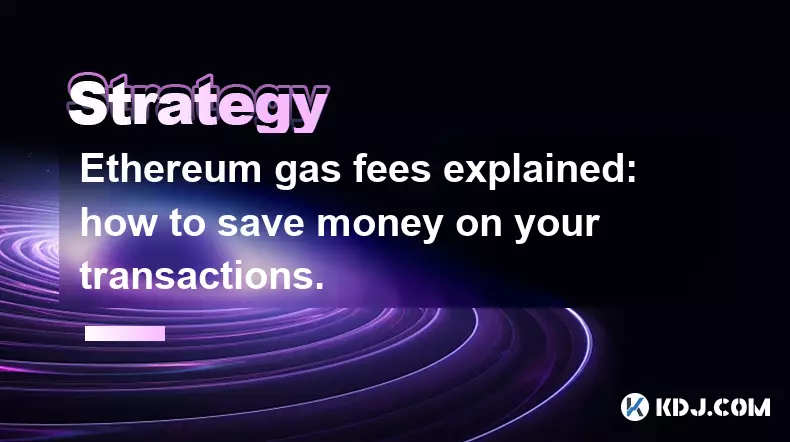
Ethereum gas fees explained: how to save money on your transactions.
Nov 04,2025 at 04:01pm
Ethereum Gas Fees: Understanding the Basics1. Ethereum operates on a decentralized network where every transaction requires computational power to exe...
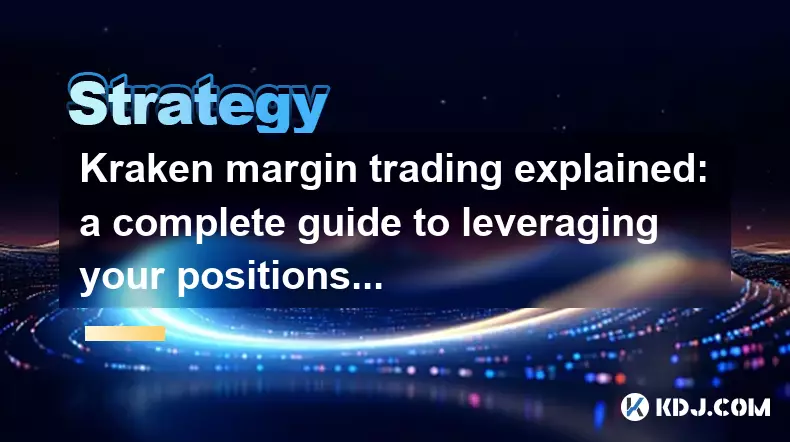
Kraken margin trading explained: a complete guide to leveraging your positions.
Nov 04,2025 at 02:19pm
Kraken Margin Trading Overview1. Kraken is one of the most established cryptocurrency exchanges offering margin trading to experienced traders seeking...

NFT flipping for beginners: a step-by-step guide to profitable trading.
Nov 02,2025 at 11:54pm
NFT Flipping Basics: Understanding the Market1. NFT flipping involves purchasing non-fungible tokens at a lower price and reselling them for profit, o...
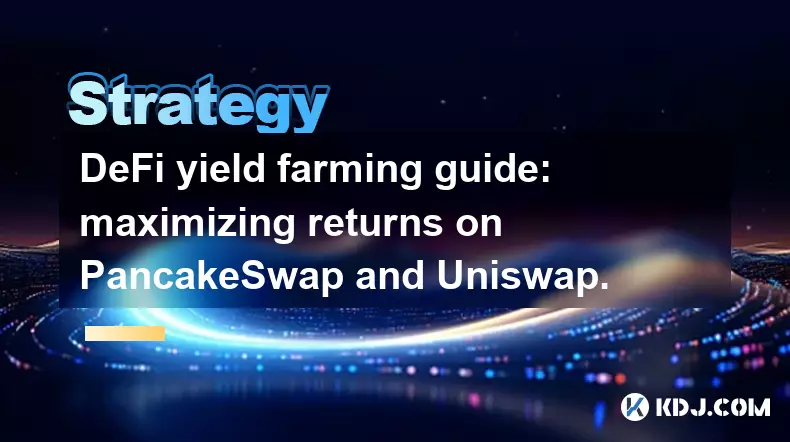
DeFi yield farming guide: maximizing returns on PancakeSwap and Uniswap.
Nov 05,2025 at 12:20am
Understanding Yield Farming on PancakeSwap and Uniswap1. Yield farming has become a central activity in the decentralized finance (DeFi) space, allowi...

How to find the next 100x altcoin: a fundamental analysis checklist.
Nov 02,2025 at 09:54pm
Decentralized Exchanges Are Reshaping Trading Dynamics1. Decentralized exchanges (DEXs) have emerged as a powerful alternative to centralized platform...

Navigating a crypto bear market: strategies for survival and profit.
Nov 05,2025 at 02:04pm
Navigating a Crypto Bear Market: Strategies for Survival and Profit Surviving a crypto bear market requires more than just patience—it demands strateg...

Ethereum gas fees explained: how to save money on your transactions.
Nov 04,2025 at 04:01pm
Ethereum Gas Fees: Understanding the Basics1. Ethereum operates on a decentralized network where every transaction requires computational power to exe...

Kraken margin trading explained: a complete guide to leveraging your positions.
Nov 04,2025 at 02:19pm
Kraken Margin Trading Overview1. Kraken is one of the most established cryptocurrency exchanges offering margin trading to experienced traders seeking...

NFT flipping for beginners: a step-by-step guide to profitable trading.
Nov 02,2025 at 11:54pm
NFT Flipping Basics: Understanding the Market1. NFT flipping involves purchasing non-fungible tokens at a lower price and reselling them for profit, o...

DeFi yield farming guide: maximizing returns on PancakeSwap and Uniswap.
Nov 05,2025 at 12:20am
Understanding Yield Farming on PancakeSwap and Uniswap1. Yield farming has become a central activity in the decentralized finance (DeFi) space, allowi...

How to find the next 100x altcoin: a fundamental analysis checklist.
Nov 02,2025 at 09:54pm
Decentralized Exchanges Are Reshaping Trading Dynamics1. Decentralized exchanges (DEXs) have emerged as a powerful alternative to centralized platform...
See all articles


























![[4K 60fps] no care by crashpancake2 (1 Coin) [4K 60fps] no care by crashpancake2 (1 Coin)](/uploads/2025/11/12/cryptocurrencies-news/videos/6913a8862890b_image_500_375.webp)









































